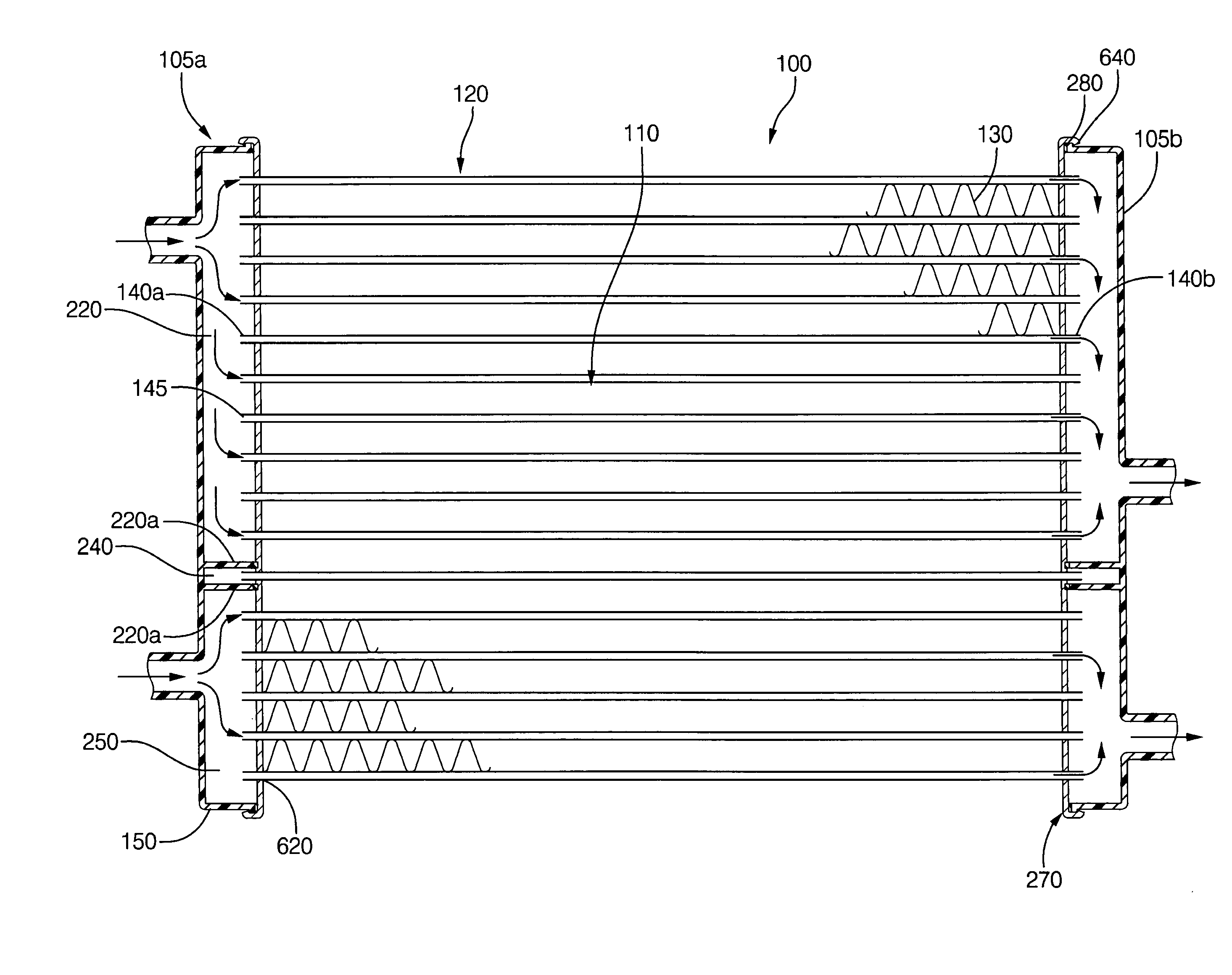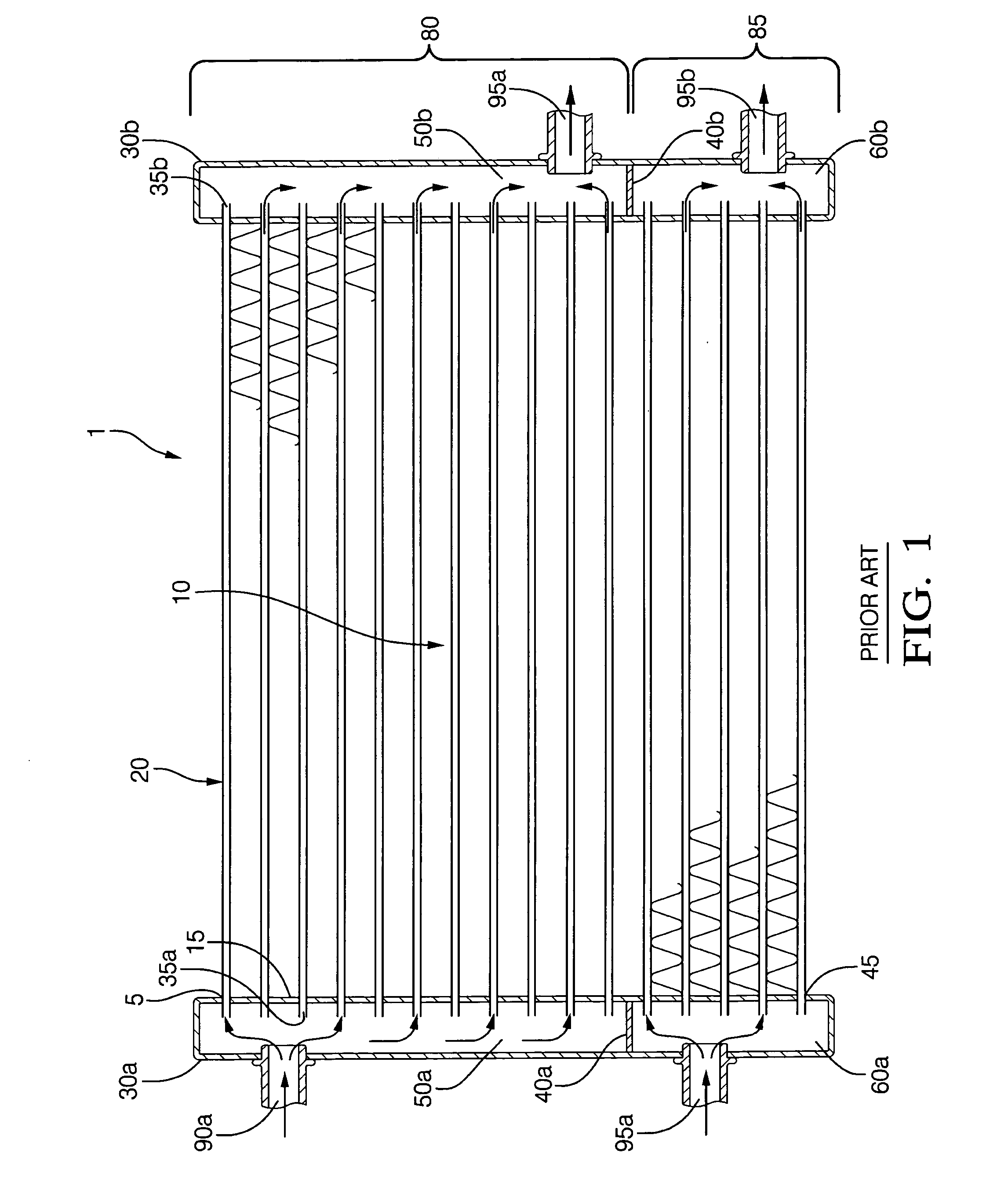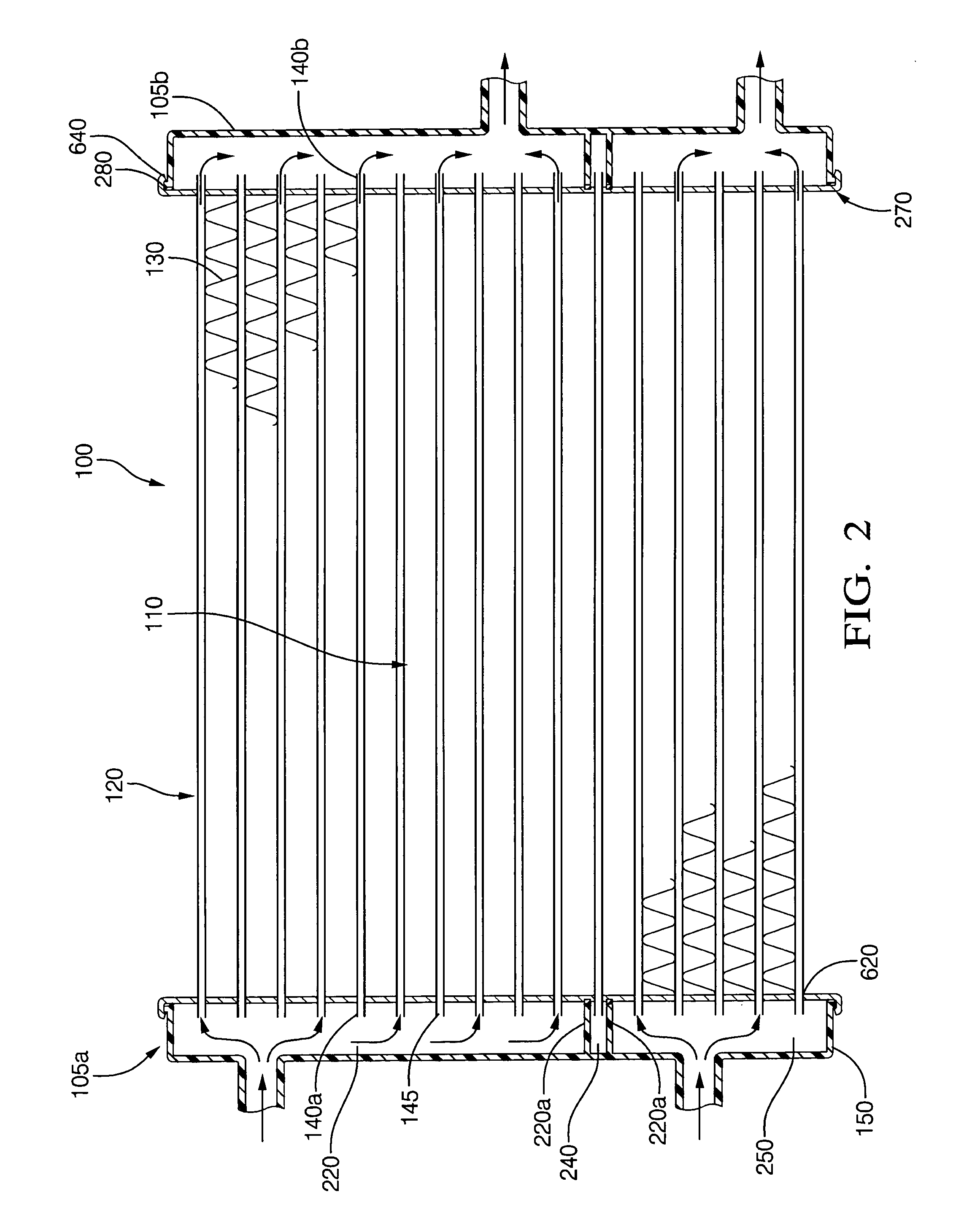Combination heat exchanger having an improved end tank assembly
a heat exchanger and end tank technology, applied in the direction of heat exchanger sealing arrangement, stationary conduit assembly, lighting and heating apparatus, etc., can solve the problems of increased vehicle weight, increased system complexity, manufacturing cost, failure of structural integrity in transverse partitions, etc., to achieve greater compression ratio of gaskets on the exterior edges of bulkheads
- Summary
- Abstract
- Description
- Claims
- Application Information
AI Technical Summary
Benefits of technology
Problems solved by technology
Method used
Image
Examples
Embodiment Construction
[0026]In reference to FIGS. 2 through 8, end tank 150 is shown substantially rectangular in appearance. The present invention does not intend the substantially rectangular shape to be limiting, but can also encompass other elongated shapes with an open face along the longitudinal axis.
[0027]FIG. 2 is a cross-sectional view of the present invention combination heat exchanger. The heat exchanger includes a core 110 having a bundle of tubes 120 that are substantially parallel. The tubes 120 are jointed longitudinally by conventional means such as welding, brazing or soldering to a supporting structure such as fins between the tubes. The core 110 has two core ends 140a, 140b corresponding with tube openings 145.
[0028]Each core end is attached to end tank assembly 105 that comprises of end tank 150, a gasket 280, and a header plate 270. The tube openings 145 are affixed to perforations 620 located on the header plate 270 by conventional means such as welding, brazing or soldering. Header...
PUM
 Login to View More
Login to View More Abstract
Description
Claims
Application Information
 Login to View More
Login to View More - R&D
- Intellectual Property
- Life Sciences
- Materials
- Tech Scout
- Unparalleled Data Quality
- Higher Quality Content
- 60% Fewer Hallucinations
Browse by: Latest US Patents, China's latest patents, Technical Efficacy Thesaurus, Application Domain, Technology Topic, Popular Technical Reports.
© 2025 PatSnap. All rights reserved.Legal|Privacy policy|Modern Slavery Act Transparency Statement|Sitemap|About US| Contact US: help@patsnap.com



